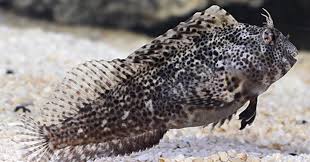The Origin Story of the Dragon in Chinese Mythology
Dragons hold an unparalleled place in Chinese mythology, symbolizing strength, power, and the mystical forces of nature. Revered and celebrated across centuries, the Chinese dragon is a creature deeply rooted in cultural, historical, and spiritual significance. But how did this iconic being come to exist in Chinese lore? The dragon, known for its benevolence and cosmic energy, has a fascinating and multi-layered origin story steeped in myth and symbolism.
This article delves into the creation story of the dragon in Chinese mythology, exploring its mythical origins, how it evolved as a symbol, and how its representation has influenced Chinese culture over millennia. The dragon is not just a mythical being but a creature of divine essence, bridging the human world with the celestial, and has had a profound impact on various aspects of Chinese civilization.
1. The Creation of the Dragon in Chinese Mythology
The Chinese dragon, known as Long (龙), is often depicted as a benevolent, powerful, and noble creature that embodies a harmonious blend of the forces of nature. Its origins can be traced back to some of the oldest Chinese myths and ancient philosophical ideas, blending Taoist, Buddhist, and Confucian traditions.
In ancient Chinese texts, the dragon is depicted as a hybrid creature, combining elements from various animals and mystical forces. Some stories trace the dragon’s creation to cosmic chaos, while others suggest it was born from heavenly beings or earthly elements. Over time, the dragon’s image has evolved, yet it continues to represent qualities like strength, imperial power, and divine protection.
1.1. The Cosmic Birth of the Dragon
One of the earliest recorded origin stories comes from ancient Chinese creation myths. According to one version, the dragon was born from the chaos of the cosmos before the universe was fully formed. This narrative is rooted in Taoist philosophy, which emphasizes the importance of balance and harmony in the universe.
In the beginning, the world was described as formless, and the heavens and earth were in disarray. From this chaos, Pangu (盘古), the first living being, emerged and used his immense power to separate the sky from the earth. As Pangu created order in the world, the dragon was born as a powerful and divine creature that symbolized the primal force of the universe.
The dragon’s birth, in this case, signifies the transition from chaos to order, as the dragon is a symbol of the cosmic forces that govern the natural world. It was considered to have emerged from the spirit of nature, a force that controlled the elements of water, air, and earth.
1.2. The Heavenly Dragon: Creation by the Gods
In other versions of the myth, the dragon is seen as a celestial being created by the gods to assist humanity and serve as a protector. In the most famous Chinese creation myth, Nüwa, the goddess who created humanity, played a significant role in shaping the dragon. According to legend, after creating human beings from clay, Nüwa realized that she needed a powerful creature to protect and guide the people. She summoned the divine dragon from the heavens, asking it to watch over the world and ensure the safety of humankind.
The dragon, in this myth, is considered a heavenly being, imbued with divine wisdom and cosmic power. Its role as a protector of humans and the Earth was integral to Chinese beliefs about the relationship between humanity and the divine.
1.3. The Dragon’s Role in the Legend of the Yellow Emperor
Another version of the dragon’s birth is linked to the Yellow Emperor (黄帝, Huángdì), one of the most famous legendary figures in Chinese mythology and history. The Yellow Emperor is considered the ancestor of the Chinese people and a ruler who unified the land. According to the legend, the Yellow Emperor was aided by a dragon, which guided him to victory during his battles against rival tribes. In this version of the myth, the dragon was a manifestation of imperial power and a divine force sent to assist the ruler.
The dragon’s connection with the Yellow Emperor is particularly important in Chinese history. It marked the beginning of the Imperial Dragon as a symbol of the emperor’s legitimate rule, linking the emperor’s power with divine authority. The idea that the emperor was the earthly representative of the dragon helped solidify the imperial system for centuries.
2. The Dragon as a Symbol of the Elements
In Chinese culture, the dragon is often depicted as a symbol of water, which plays a crucial role in agriculture and life. The elemental nature of the dragon connects it to forces of nature like rain, rivers, and lakes, making it an important symbol in both farming and spirituality.
2.1. The Dragon’s Relationship with Water
The dragon in Chinese mythology is frequently associated with water because of its ability to control rain and storms, which were essential to agricultural life. Ancient Chinese civilizations believed that the dragon could summon rain from the heavens and was thus vital for ensuring bountiful harvests. The connection to rain was crucial to the survival of the empire, and this relationship gave rise to the dragon’s depiction as a provider of life and sustenance.
As water was an important element in Chinese cosmology, so too was the dragon considered a key force that maintained harmony between the heavens, earth, and humanity. In this way, the dragon was a mediator between the natural world and the human realm, ensuring that the flow of water—and, by extension, life—was balanced and prosperous.
2.2. The Five Clawed Dragon: Symbol of Imperial Authority
As the dragon evolved as a symbol in Chinese culture, it became synonymous with the emperor’s power and authority. The most recognizable form of the dragon is the five-clawed dragon (五爪龙, wǔ zhuǎ lóng), a symbol that is reserved only for the emperor. This form of the dragon is believed to have originated in the Han Dynasty, where it became a powerful symbol of imperial rule. The five claws represented the emperor’s divine authority and his connection to the heavenly mandate.
The five-clawed dragon is often depicted on imperial robes, thrones, and palace decorations. It represents the emperor’s role as the ruler who holds the divine right to govern, aligning his earthly power with the forces of nature embodied by the dragon.
3. The Evolution of the Dragon in Chinese Society
As Chinese civilization evolved, so too did the symbolism of the dragon. It became an emblem of more than just imperial authority—it transformed into a symbol of luck, prosperity, and spiritual protection. The dragon’s influence spread throughout Chinese society and into other cultures in Asia.
3.1. Dragons in Chinese New Year Celebrations
One of the most enduring legacies of the Chinese dragon is its role in the Chinese New Year celebrations. The dragon dance, a traditional performance in which a team of dancers manipulates a dragon costume, is an iconic feature of the New Year festivities. This practice dates back to ancient times and is believed to bring good luck, prosperity, and protection for the upcoming year.
The dragon dance is symbolic of the dragon’s ability to chase away evil spirits and bring fortune to the people. It is a vivid reminder of the dragon’s significance in both the spiritual and cultural realms of Chinese life.
3.2. The Dragon in Chinese Art and Architecture
The dragon’s importance is also evident in Chinese art and architecture. From imperial palaces to temples, the dragon is frequently depicted in intricate designs on walls, furniture, and monuments. These depictions are not merely ornamental but serve as symbols of divine protection, strength, and cosmic power.
The use of dragon motifs in architecture highlights the belief that the dragon’s energy could be harnessed to protect the emperor, the empire, and the people. It is also seen as a way to link earthly structures with the celestial realm, reinforcing the idea of divine order in the physical world.
4. Conclusion
The story of the dragon’s creation in Chinese mythology is a tale that reflects the deep connection between humanity, the natural world, and the divine. From the primordial chaos of the universe to its central role in imperial and spiritual affairs, the dragon stands as a powerful symbol that has shaped Chinese culture for thousands of years.
The dragon’s origin story, with its themes of cosmic balance, divine protection, and elemental power, continues to resonate today, cementing its place as one of the most enduring and cherished symbols in Chinese culture. Whether as a symbol of imperial authority, spiritual guidance, or natural harmony, the dragon remains an integral part of the rich tapestry of Chinese mythology and its cultural heritage.

